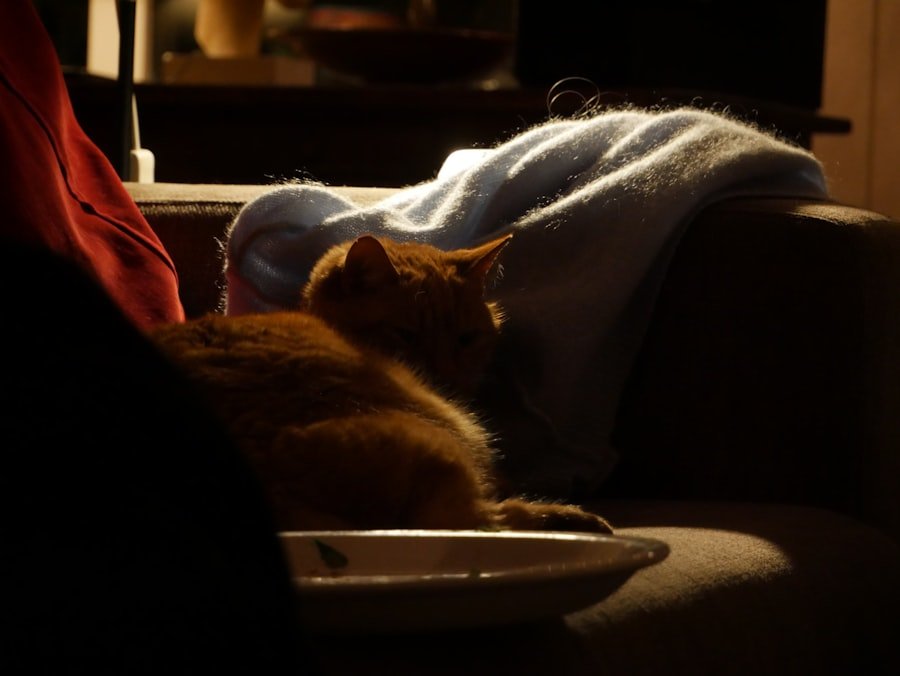The relationship between screen time and sleep quality has garnered significant attention in recent years, particularly as the prevalence of digital devices has surged. Research indicates that excessive screen time, especially before bedtime, can lead to a myriad of sleep disturbances. The blue light emitted from screens can interfere with the body’s natural circadian rhythms, which are crucial for regulating sleep-wake cycles.
This disruption can result in difficulties falling asleep, reduced sleep duration, and poorer overall sleep quality. For instance, a study published in the journal “Sleep Health” found that individuals who engaged in high levels of screen time reported more sleep disturbances and daytime sleepiness compared to those who limited their screen exposure. Moreover, the content consumed during screen time can also play a role in sleep disruption.
Engaging with stimulating or distressing material—such as action-packed video games or intense news stories—can elevate heart rates and increase anxiety levels, making it harder for individuals to unwind and prepare for sleep. The mental engagement required by these activities can keep the brain active long after the screen is turned off, leading to prolonged periods of wakefulness. This phenomenon is particularly concerning for adolescents and children, who may be more susceptible to the effects of screen time on their developing sleep patterns.
Establishing Screen Time Limits
Establishing screen time limits is a crucial step in mitigating the negative effects of excessive device use on sleep. Parents and caregivers play a pivotal role in setting these boundaries, which should be tailored to the age and developmental stage of the child. The American Academy of Pediatrics recommends that children aged 2 to 5 should have no more than one hour of high-quality programming each day, while children younger than 18 months should avoid screen time altogether, except for video chatting.
For older children and teenagers, it is essential to create a balanced approach that considers both educational and recreational screen time. To effectively implement screen time limits, families can utilize various strategies. One approach is to establish designated “screen-free” times during the day, such as during meals or family gatherings, which encourages face-to-face interaction and reduces reliance on devices.
Additionally, using apps or built-in device features that track and limit usage can help individuals become more aware of their screen habits. By fostering an environment where screen time is moderated, families can promote healthier sleep patterns and overall well-being.
Creating a Screen-Free Bedtime Routine

A screen-free bedtime routine is instrumental in preparing the body for restful sleep. Establishing a consistent pre-sleep ritual can signal to the brain that it is time to wind down and transition into a state conducive to sleep. This routine might include activities such as reading a physical book, practicing relaxation techniques like deep breathing or meditation, or engaging in gentle stretches.
These calming activities can help lower stress levels and promote a sense of tranquility, making it easier to drift off to sleep. In addition to promoting relaxation, a screen-free bedtime routine can also help reinforce healthy sleep hygiene practices. For example, setting a specific bedtime and sticking to it—even on weekends—can help regulate the body’s internal clock.
Creating a comfortable sleep environment by dimming lights, maintaining a cool room temperature, and minimizing noise can further enhance the effectiveness of this routine. By prioritizing a screen-free wind-down period, individuals can cultivate habits that support better sleep quality over time.
The Role of Blue Light in Disrupting Sleep
| Study | Findings |
|---|---|
| Harvard Health Publication | Exposure to blue light at night can disrupt the body’s natural sleep-wake cycle |
| Journal of Applied Physiology | Blue light exposure before bedtime can suppress melatonin production, affecting sleep quality |
| American Academy of Sleep Medicine | Increased use of electronic devices emitting blue light is associated with sleep disturbances |
Blue light has emerged as a significant factor in discussions about sleep disruption due to its prevalence in modern technology. This high-energy visible light is emitted by screens on smartphones, tablets, computers, and televisions. Exposure to blue light in the evening hours can inhibit the production of melatonin, the hormone responsible for regulating sleep cycles.
When melatonin levels are suppressed, individuals may find it challenging to fall asleep at their desired bedtime, leading to delayed sleep onset and reduced overall sleep duration. Research has shown that even short-term exposure to blue light before bedtime can have immediate effects on sleep quality. A study published in “The Journal of Clinical Endocrinology & Metabolism” found that participants who were exposed to blue light for just two hours before bed experienced significantly lower melatonin levels compared to those who were not exposed.
This highlights the importance of being mindful about screen use in the hours leading up to sleep. To mitigate these effects, individuals can consider using blue light filters on their devices or wearing blue light-blocking glasses during evening hours.
Encouraging Alternative Activities to Screen Time
Encouraging alternative activities to screen time is essential for fostering a balanced lifestyle that promotes both mental and physical well-being. Engaging in hobbies such as reading, drawing, playing musical instruments, or participating in outdoor sports can provide fulfilling experiences that do not involve screens. These activities not only serve as healthy distractions but also stimulate creativity and critical thinking skills.
For instance, children who engage in imaginative play or hands-on activities often develop better problem-solving abilities compared to those who spend excessive time on screens. Moreover, physical activity plays a vital role in promoting better sleep quality. Regular exercise has been shown to improve sleep patterns by reducing anxiety and stress levels while increasing feelings of relaxation.
Families can encourage outdoor playtime or organized sports as alternatives to sedentary screen activities. By fostering an environment where alternative activities are valued and promoted, individuals can develop healthier habits that contribute positively to their overall lifestyle and sleep quality.
Setting Boundaries and Consistency

Setting boundaries around screen time is crucial for maintaining a healthy balance between digital engagement and other aspects of life. Consistency in enforcing these boundaries helps reinforce expectations and encourages adherence to established limits. For example, families might agree on specific times when screens are allowed—such as after homework is completed or during designated leisure hours—while also designating times when screens are off-limits entirely.
In addition to establishing clear rules regarding screen use, it is essential for parents and caregivers to model healthy behaviors themselves. Children often emulate the habits of adults; therefore, demonstrating balanced screen use can reinforce the importance of moderation. Open discussions about the reasons behind these boundaries can also foster understanding and cooperation among family members.
By creating an environment where boundaries are respected and consistently enforced, families can cultivate healthier relationships with technology.
Monitoring and Adjusting Screen Time Limits
Monitoring screen time usage is an ongoing process that allows families to assess whether established limits are effective or need adjustment. Regular check-ins can help identify patterns in behavior and highlight any potential issues related to excessive screen use or its impact on sleep quality. For instance, if a child consistently struggles with falling asleep or exhibits signs of fatigue during the day, it may be necessary to reevaluate their screen time limits.
Adjustments should be made thoughtfully and collaboratively, involving all family members in discussions about their needs and preferences regarding technology use. This approach not only empowers individuals but also fosters accountability within the family unit. Utilizing tracking tools or apps can provide valuable insights into usage patterns, enabling families to make informed decisions about necessary changes.
By remaining flexible and responsive to individual needs, families can create an environment that supports healthy screen habits while prioritizing quality sleep.
Seeking Professional Help if Needed
In some cases, persistent sleep issues related to screen time may warrant professional intervention. If individuals continue to experience significant difficulties with sleep despite implementing various strategies—such as establishing limits or creating bedtime routines—it may be beneficial to consult with a healthcare provider or sleep specialist. These professionals can offer tailored guidance based on individual circumstances and may recommend further assessments or interventions.
Additionally, mental health professionals can provide support for underlying issues such as anxiety or stress that may be exacerbated by excessive screen use or disrupted sleep patterns. Cognitive-behavioral therapy (CBT) has been shown to be effective in treating insomnia and other sleep disorders by addressing maladaptive thought patterns and behaviors related to sleep. Seeking professional help when needed ensures that individuals receive comprehensive support tailored to their unique challenges, ultimately leading to improved sleep quality and overall well-being.
FAQs
What is screen time?
Screen time refers to the amount of time spent using electronic devices such as smartphones, tablets, computers, and televisions.
How does screen time affect sleep?
Excessive screen time, especially before bedtime, can disrupt the body’s natural sleep-wake cycle and make it harder to fall asleep. The blue light emitted by screens can also suppress the production of melatonin, a hormone that regulates sleep.
What are the recommended guidelines for screen time?
The American Academy of Pediatrics recommends limiting screen time to no more than 1 hour per day for children aged 2 to 5, and for older children and teenagers, setting consistent limits on screen time and ensuring it does not interfere with sleep and physical activity.
How can I reduce screen time for better sleep?
To reduce screen time for better sleep, you can establish a “no screens” rule at least an hour before bedtime, create a relaxing bedtime routine that does not involve screens, and set specific times during the day for screen use.
What are some alternative activities to screen time before bed?
Alternative activities to screen time before bed include reading a book, practicing relaxation techniques such as deep breathing or meditation, taking a warm bath, or engaging in gentle stretching exercises.



